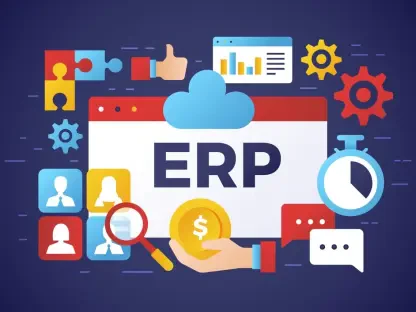I’m thrilled to sit down with Vijay Raina, a renowned expert in enterprise SaaS technology and software design. With his deep expertise in crafting innovative tools and providing thought leadership in software architecture, Vijay offers invaluable insights into the evolving landscape of medical technology. Today, we’ll dive into the transformative work happening at Viva Innovation Co., Ltd. with their Good Doctor platform, exploring how AI-driven SaaS solutions are reshaping hospital operations, the power of data in healthcare innovation, and the future of patient management. Let’s get started.
Can you walk us through the story behind Viva Innovation and the Good Doctor platform?
Absolutely. Viva Innovation started with a mission to bridge the gap between patients and healthcare providers through technology. The Good Doctor platform was born as a health check-up service, making it easier for individuals to book appointments and manage their health screenings. What inspired its creation was a clear need for streamlined access to preventive care. Since launching, it’s grown tremendously, now boasting over 2 million users and partnerships with more than 500 hospitals in Korea. It’s become a trusted name for personal health check-up reservations, setting the stage for broader innovations in medical technology.
What drove the decision to expand Good Doctor into an AI-based medical SaaS for hospitals?
The expansion into AI-based SaaS was a natural progression. We saw that hospitals, especially those focused on health check-ups, were bogged down by repetitive administrative tasks and inefficiencies in patient follow-up. Our goal became to automate these workflows using AI, shifting the focus from just connecting patients to hospitals to actually enhancing how hospitals operate. This move allows us to tackle deeper operational challenges and support medical staff in ways that weren’t possible with the original platform.
How does the AI at the core of your SaaS solution function, and what makes it unique?
Our AI is built on a massive dataset of over 7 million check-up records, which we’ve used to train and fine-tune the technology specifically for medical check-ups. This means it’s not a generic AI—it’s highly specialized to understand patterns in health data. It can automatically classify patients who need further attention based on their results and recommend additional tests, acting as a decision-support tool for doctors. This reduces the guesswork and helps medical staff focus on critical clinical decisions rather than paperwork.
Could you break down the two main components of the Good Doctor Medical AI Health Check-up SaaS?
Sure. We’ve designed two distinct solutions to cover the full health check-up journey. The first is the CMS, or Check-up Reservation Management, which handles everything from online bookings through a hospital’s website to sending questionnaires and managing capacity. It’s all about automating the front-end process. The second is the PMS, or Follow-up Management, which kicks in after check-ups. It automates result delivery, flags patients with concerning findings, guides them toward additional exams, and even offers AI-driven health consultations. These are offered separately so hospitals can pick what fits their specific needs.
In practical terms, how does this SaaS solution improve day-to-day operations for hospitals?
On a daily basis, it’s a game-changer. For medical staff, it cuts down on tedious tasks like scheduling, result compilation, and follow-up coordination, freeing them up to focus on patient care. It also helps hospitals generate revenue during slower periods by facilitating follow-up exams and additional services. For example, we’ve seen hospitals that adopted our system manage higher patient volumes with less strain on staff, and they’ve reported better patient satisfaction because follow-ups are more consistent and personalized.
What’s the thinking behind offering this as a subscription-based model without upfront costs?
We wanted to lower the barrier to entry. Hospitals, especially smaller or specialized ones, often hesitate to invest in new tech due to high initial costs. By offering a subscription model with no setup fees, we make it flexible and accessible. They can scale usage based on their needs and budget, which builds trust and encourages adoption. It’s about meeting hospitals where they are and growing with them over time.
Can you share more about the significance of obtaining digital medical device approval for the follow-up function?
Getting digital medical device approval for our follow-up function is a major milestone. It validates the safety and efficacy of our technology in a clinical setting. This feature allows hospitals to systematically manage patients post-check-up, ensuring those with findings get the right guidance for further care. It’s not just about automation—it’s about improving health outcomes through continuous monitoring and intervention, and this approval underscores our commitment to meeting rigorous medical standards.
What’s your forecast for the future of AI-driven SaaS in healthcare?
I’m incredibly optimistic. AI-driven SaaS is poised to revolutionize healthcare by making systems smarter, more efficient, and more patient-centric. Over the next decade, I expect we’ll see even deeper integration of AI into clinical workflows, not just for check-ups but across diagnostics, treatment planning, and personalized care. The key will be balancing innovation with trust—ensuring data privacy and clinical accuracy remain top priorities. We’re just scratching the surface of what’s possible, and I believe platforms like Good Doctor will lead the way in setting new standards for healthcare delivery.









